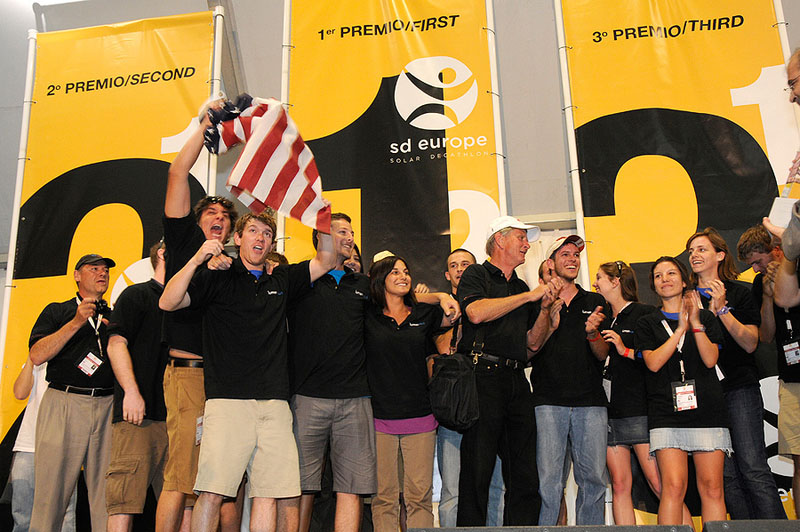Virginia Tech Lumenhaus wins international solar house competition

Virginia Tech’s entry in Solar Decathlon Europe has won the 10-day competition in Madrid, Spain; it was announced Sunday evening.
After being inspected in different categories each day, the solar house -- designed and originally constructed on the Blacksburg campus -- was declared the most efficient structure in the decathlon.
During the competition 17 solar houses from seven countries on three continents were judged in 10 different categories. The Virginia Tech Lumenhaus placed in almost all the categories, including tying for first in Architecture, placing second in Communication and Social Awareness, and placing third in both Industrialization and Market Viability and in Lighting.
“We were successful over a number of first-rate, world-class work under teams with excellent resources and expertise,” said Robert Dunay, professor in the College of Architecture and Urban Studies and one of the faculty leaders on the project.
A team of faculty, undergraduate, and graduate students from four Virginia Tech colleges — the College of Architecture and Urban Studies, the College of Engineering, the Pamplin College of Business, and the College of Liberal Arts and Human Sciences, designed and built the solar house. It was inspired by Miles Van Der Rohe’s Farnsworth house and allows occupants space to interact with each other and with the environment outside.
The faculty and student team that went to Madrid to resurrect the house after its shipment from Blacksburg to Madrid will return to campus on Friday, July 2. The university’s Lumenhaus won’t arrive home for several weeks after that.
The solar house began its journey from the Virginia Tech campus in Blacksburg on April 27. It took a truck from campus to the harbor in Baltimore, Md., and then two ships to reach Bilbao, Spain, and another truck to Madrid. The house arrived in the Spanish capital on June 7 so that the team had about 10 days to put it back together for the competition.
Virginia Tech’s College of Architecture and Urban Studies is composed of four schools: the School of Architecture + Design, including architecture, industrial design, interior design and landscape architecture; the School of Public and International Affairs, including urban affairs and planning, public administration and policy and government and international affairs; the Myers-Lawson School of Construction, which includes building construction in the College of Architecture and Urban Studies and construction engineering management in the College of Engineering; and the School of the Visual Arts, including programs in studio art, visual communication and art history.
Related Links
- Virginia Tech Lumenhaus at the 2010 Solar Decathlon Europe
- Lumenhaus solar decathlon team receives 2010 XCaliber Award
- Virginia Tech Solar House journeys to Madrid, Spain, for Solar Decathlon Europe
- Virginia Tech Lumenhaus to be exhibited in Times Square, featured on ABC's Good Morning America, Jan. 28
- University to demonstrate solar house innovations at Capitol Hill tech policy exhibition
- Virginia Tech solar house on exhibit at National Building Museum Sept. 5-27




